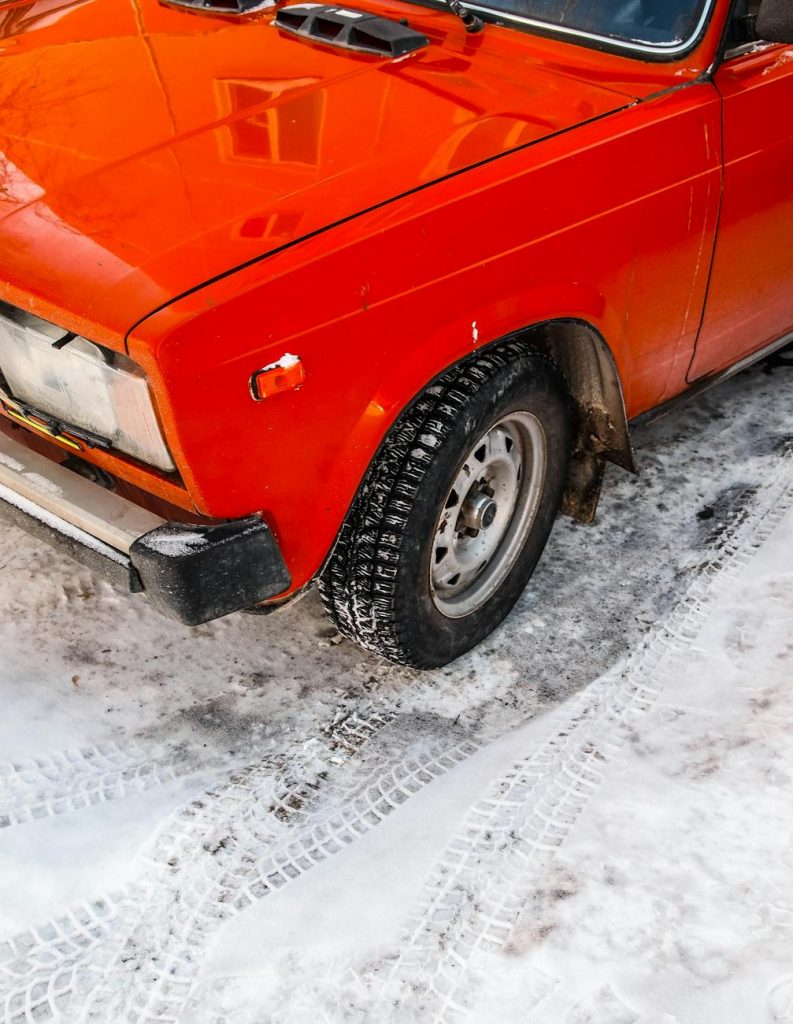Understanding Winter Tire Traction
Maximizing tire traction during winter is essential for safe driving. In this section, we will explore the importance of winter tires, the factors affecting tire traction, and how tread patterns influence traction.
Importance of Winter Tires
Winter tires are specifically designed to handle the harsh conditions associated with cold weather, snow, and ice. They provide better grip and control compared to all-season tires, making them a crucial component for winter driving.
| Tire Type | Temperature Range | Performance on Ice and Snow | Overall Traction |
|---|---|---|---|
| Winter Tires | Below 45°F (7°C) | Excellent | High |
| All-Season Tires | Above 45°F (7°C) | Moderate | Medium |
| Summer Tires | Above 45°F (7°C) | Poor | Low |
Winter tires use a special rubber compound that remains flexible at lower temperatures, ensuring better contact with the road. This flexibility enhances braking and handling performance, significantly reducing the risk of accidents. For a detailed comparison, visit all-season tires vs winter tires.
Factors Affecting Tire Traction
Several factors influence the traction of winter tires, including:
- Tread Depth: Deeper treads provide better grip as they can channel snow and slush away from the tire. Check out our article on winter tire tread depth for more details.
- Tire Pressure: Proper tire inflation ensures optimal contact with the road. Learn more about winter tire inflation.
- Weather Conditions: Ice, snow, and slush can all impact tire traction differently.
- Tire Wear: Worn tires have reduced traction. Refer to our guide on winter tire wear.
| Factor | Impact on Traction | Recommended Action |
|---|---|---|
| Tread Depth | High | Maintain depth above 6/32″ |
| Tire Pressure | Moderate | Check regularly and maintain optimal levels |
| Weather Conditions | High | Drive cautiously in severe weather |
| Tire Wear | High | Replace tires before tread wears out |
How Tread Patterns Influence Traction
Tread patterns play a significant role in enhancing tire traction during winter. They are designed to improve grip on snow and ice, channel water away, and reduce the risk of hydroplaning.
- Directional Treads: These have a V-shaped pattern that pushes snow and water aside, providing better stability and control.
- Asymmetrical Treads: These offer a combination of different tread patterns on the inner and outer parts of the tire, enhancing grip and handling.
- Siping: Small slits in the tread blocks that increase the tire’s ability to grip the road surface.
For a comprehensive look at how tread patterns affect performance, visit our article on winter tire tread patterns.
Understanding the importance of winter tires, the factors affecting their traction, and how tread patterns influence their performance can help drivers make informed decisions. By selecting the right tires and maintaining them properly, we can ensure safer driving during the winter months. For more information on selecting the best winter tires, check out our winter tire buying guide.
Maximizing Tire Traction for Winter Safety
Ensuring optimal tire traction during winter is crucial for safety on icy and snowy roads. In this section, we’ll discuss proper tire maintenance, driving techniques for improved traction, and additional safety measures for winter driving.
Proper Tire Maintenance
Maintaining your tires is essential for maximizing traction during winter months. Regular checks and upkeep can make a significant difference in performance and safety.
Tire Pressure
Keeping tires properly inflated is critical. Cold temperatures can cause tire pressure to drop, which can reduce traction and increase wear. Regularly check tire pressure and adjust accordingly to maintain optimal levels.
| Temperature (°F) | Recommended Tire Pressure (PSI) |
|---|---|
| 32°F | 32-35 PSI |
| 20°F | 30-33 PSI |
| 0°F | 28-31 PSI |
Tread Depth
Adequate tread depth is necessary for gripping snowy and icy surfaces. Worn-out treads can severely compromise traction. It’s recommended to have at least 6/32 inches of tread depth for winter tires. For more details on tread depth, refer to our article on winter tire tread depth.
| Tread Depth (inches) | Condition |
|---|---|
| 10/32 | New |
| 6/32 | Acceptable |
| 4/32 | Replace Soon |
| 2/32 | Replace Immediately |
Regular Inspections
Ensure regular inspections for any signs of wear or damage. Look for cuts, punctures, or uneven wear patterns. Timely rotation, alignment, and balancing can extend tire life and improve traction. Check out our guide on winter tire rotation for more information.
Driving Techniques for Improved Traction
Adopting proper driving techniques can significantly enhance tire traction on winter roads. Here are some methods to consider:
- Smooth Acceleration and Braking: Avoid sudden starts and stops. Gradual acceleration and deceleration help maintain traction and prevent skidding.
- Maintain Safe Distance: Increase the following distance between vehicles to allow more time to react and stop safely.
- Steering Control: Steer gently and avoid sharp turns. Sudden movements can cause loss of traction.
- Use Low Gears: In slippery conditions, use lower gears to help maintain control and traction.
For more driving tips, read our article on tips for safe winter driving.
Additional Safety Measures for Winter Driving
Besides proper tire maintenance and driving techniques, consider the following safety measures to ensure maximum traction and safety during winter:
- Winter Tire Usage: Always use winter tires during the cold months. They are specifically designed to provide better traction on snow and ice. Explore our winter tire recommendations for more insights.
- Carry Emergency Supplies: Keep an emergency kit in your vehicle, including items like a shovel, ice scraper, and sand or kitty litter for added traction if you get stuck.
- Stay Informed: Monitor weather conditions and plan your trips accordingly. Avoid driving in severe weather when possible.
Implementing these measures will help you maintain optimal tire traction and ensure a safer driving experience during winter. For more information on winter tires, explore our winter tire buying guide.



